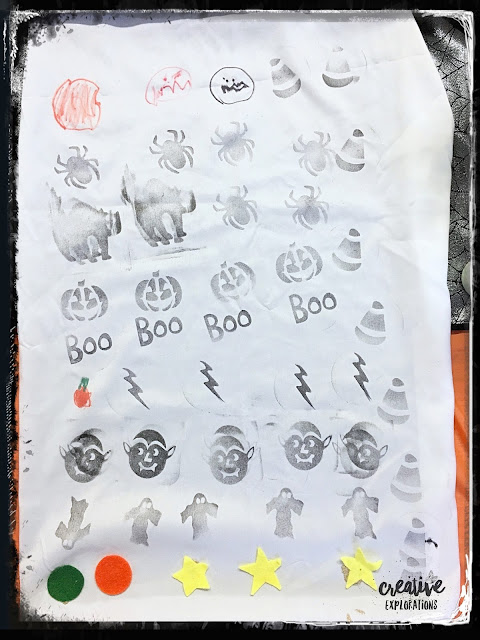"If you have an apple and
I have an apple, and we exchange these apples,
then you and I will still each have one apple.
But if you have an idea and
I have an idea, and
we exchange these ideas,
then each of us will have two ideas."
George Bernard Shaw
On the first day of school we were gifted these apples. The apples were placed at the inquiry table for the children to investigate a few days later. Several of the children completed observational drawings of the apples and shared their understanding of apples with us.
After allowing the children time to look at the apples a question was posed and recorded.
"How do you make apples?"
The book, "How Do Apples Grow?" was added to the invitation of apples. Through discussion and questioning we shared the book with the child who wondered about apples.
Sensory Apple Play
We offered this sensory bin play as another way for the children to communicate their thinking and ideas about apples. The loose parts added to the rice were an invitation to explore, an opportunity to connect their ideas to the materials. The children interpreted the loose parts in many ways. We observed and documented their interactions and discussions. Often they shared their knowledge of apples growing on trees with each other as they played. The children also enjoyed the sensory experience of the rice. They scooped the rice up in their hands and let it rain down over the tree. The sound of the rice as it dropped back into the bin was soothing and the children repeated this process over and over again.
Special thank you to the lunch helpers who were also drawn into our learning environment. They enjoyed setting up the the materials in our sensory bin for the children to discover upon returning from recess.
Discovering the Taste of Apples
"Can I eat this?"
This question posed by one of our learners prompted our next interaction with apples. The next day we offered the children a variety of apples to taste. A group of children gathered at the table. After a discussion with the educator about the colour of the apples and the seeds inside, the children were offered a taste of each kind of apple. One of the children shared, "This one is sour." Another child pointed to the red apple and said, "That's a red delicious." The children also shared stories of their own experiences going apple picking.

We offered the children apples again a few days later as part of our Thanksgiving Celebration. Again the children gathered at the table and this time asked about the names of the other apples. The educator used the iPad to share a photo of several kinds of varieties of apples to the children. They named the three kinds we were offering. One child exclaimed after hearing the name Golden Delicious, "I know why it's called Golden Delicious. Cause it's golden and it's delicious!" Then he pointed to the Golden Delicious apple. As educators we noticed how engaged the children were in this simple exploration of apples.
September is about building and forming relationships with each other and the learning environment. Relationships that will carry us through the year as we learn together.
Within our learning environment, these apples that were so generously presented to us on the first day of school served as a provocation. An invitation to build relationship, an offering that nourishes not only hunger but supported our connectedness to each other. The sharing of food is a familiar and joyous experience. It is a necessity of life, one that sustains us on so many levels. We are blessed and grateful to have had this experience with the children.
"I observe you, and while I observe you,
I "capture" you, I interpret you.
But at the same time
I also modify my own knowledge.
So observation is not only
an individual action but also
a reciprocal relationship.
It is an action, a relationship, a process
that makes us aware of
what is happening around us."
Carlina Rinaldi
I am also sharing this reflective blog post by Susan Wright on the Language of Food. We were so inspired after attending a workshop given by the Ontario Reggio Association in Guelph.
Susan's thoughts are sure to inspire you!
http://innovation2learn.com
Would love to hear from you.
Share in the comments how food
connects and builds relationships.
What food explorations have
you shared with your child?
Join the conversation!






















